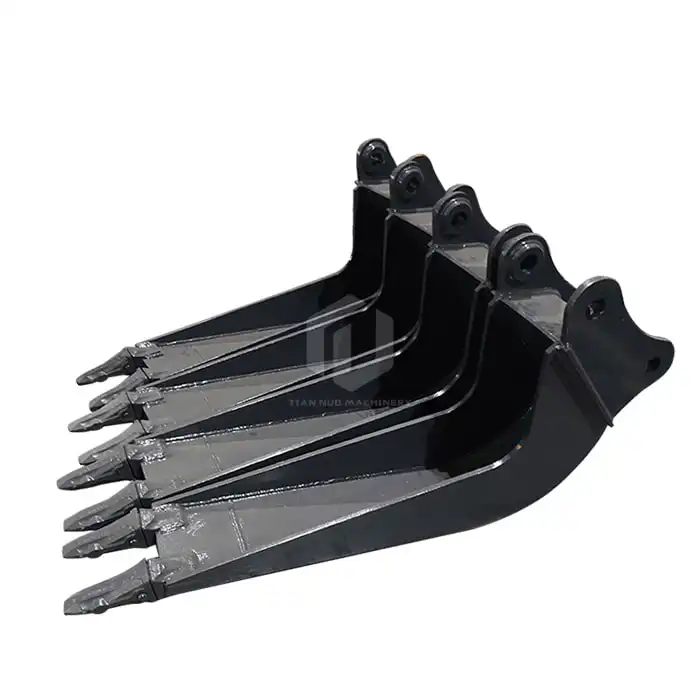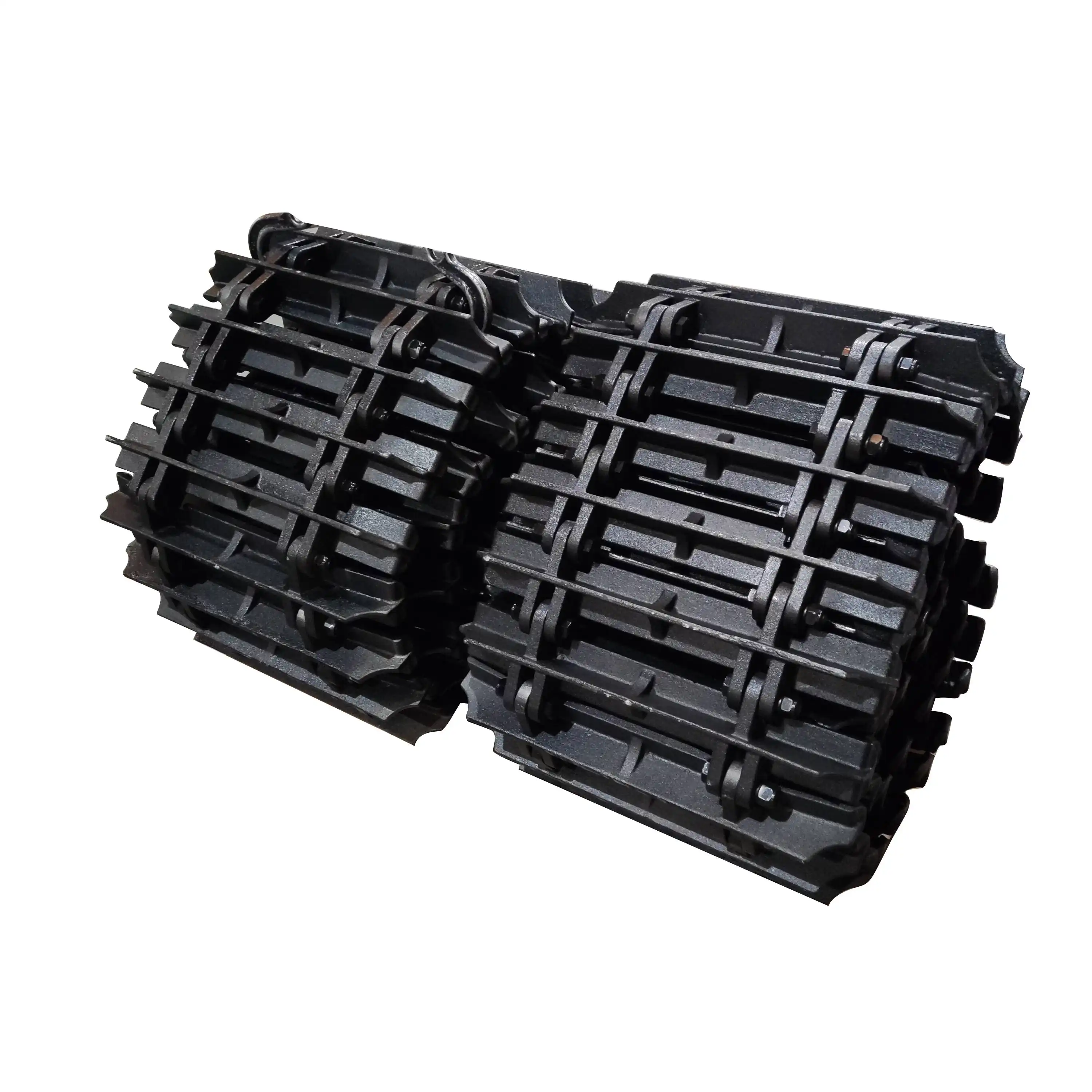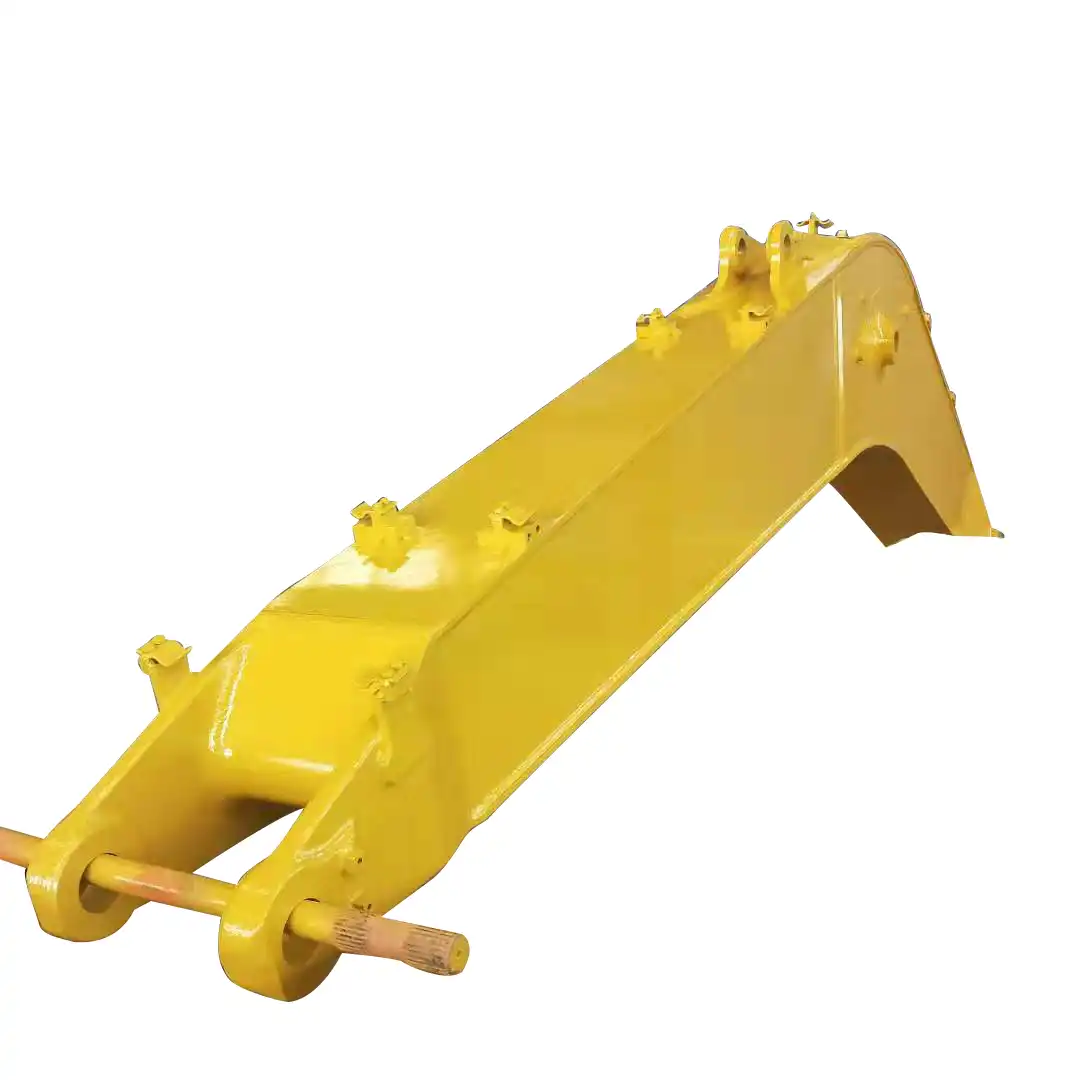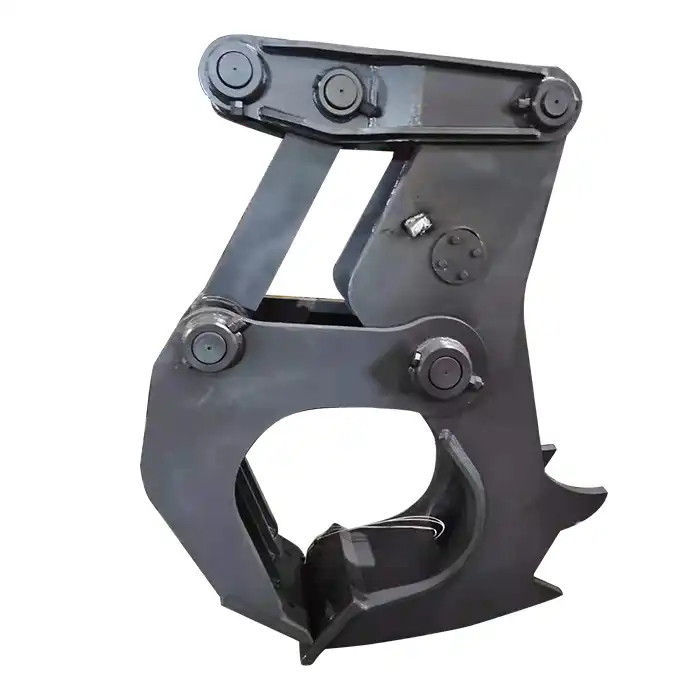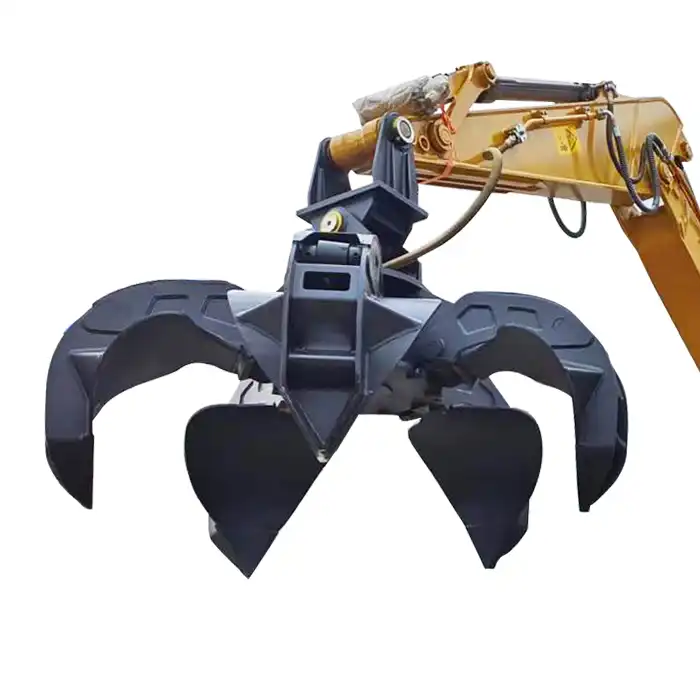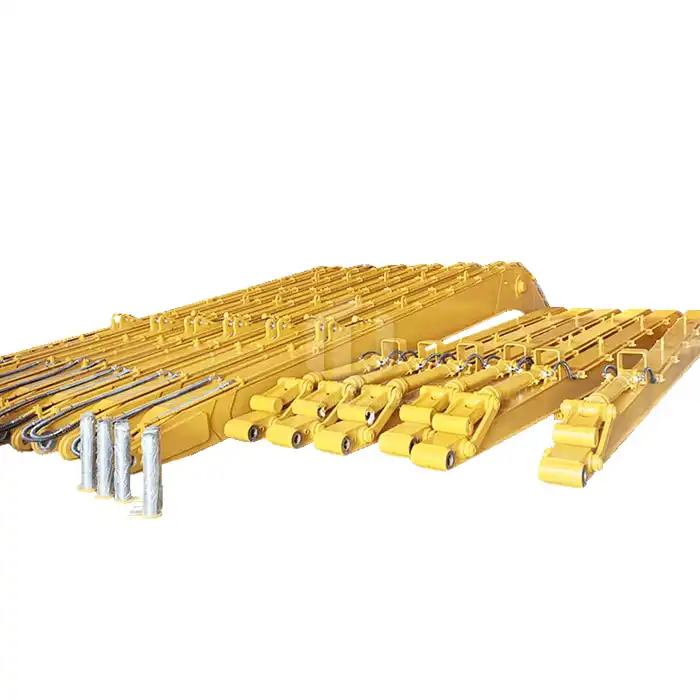What is a clamshell bucket designed to do?
A clamshell bucket is specifically engineered to perform vertical digging operations and handle loose materials with exceptional precision and efficiency. These specialized excavator attachments derive their name from their distinctive two-shell design that mimics the opening and closing motion of a clam. Its function centers on excavating materials in confined spaces where horizontal digging proves impractical, such as creating deep foundations, digging trenches in restrictive environments, or performing dredging operations in waterways. Their unique design enables operators to lower the bucket in an open position directly above the target material, close the shells to secure the load, and lift vertically without requiring the traditional scooping motion of conventional buckets.
Clamshell Bucket Design Details

Shell Configuration and Materials
The shell design represents the defining characteristic of the clamshell bucket, featuring two symmetrical halves that meet tightly when closed. These shells incorporate strategically positioned teeth or cutting edges that facilitate penetration into various material types, from loose aggregates to compacted soils. Premium bucket designs employ high-carbon alloy steel for the shell construction, offering an optimal balance between weight and durability while maximizing material capacity.
The interior surfaces of quality shells feature wear-resistant liners that significantly extend service life when handling abrasive materials such as crushed stone or mining aggregates. These liners can be manufactured from hardened steel, manganese alloys, or specialized ceramic composites depending on the specific application requirements. The shell geometry undergoes precise engineering to maximize material retention while minimizing weight, with computerized stress analysis guiding reinforcement placement at high-load points.
Shell closure mechanisms vary across different bucket models, with high-end designs featuring overlapping edges that prevent material leakage during transport operations. This sealed closure capability proves particularly valuable when handling fine-grained materials or environmentally sensitive substances that require containment during excavation and transport phases. For railway applications, specialized shell configurations accommodate the unique dimensions of ballast materials and track-bed components.
Pivot System Engineering
The pivot mechanism forms the crucial connection point between the two shells, requiring exceptional strength to withstand repeated loading cycles under harsh conditions. This system typically incorporates hardened steel pins and bushings that distribute forces evenly while allowing smooth articulation during opening and closing operations. Premium designs feature sealed bearing surfaces that extend service life by preventing contamination from abrasive materials during operation.
Load distribution across the pivot assembly receives particular attention during the engineering phase, with computer modeling identifying stress concentration points that require reinforcement. This analytical approach ensures long-term reliability even when handling maximum-rated loads repeatedly. The pivot geometry determines the bucket's closing force characteristics, with different configurations optimized for specific material types ranging from light organic matter to dense rock and concrete debris.
Connection Systems
Attachment interfaces connect clamshell buckets to the excavator's arms through standardized coupling systems that ensure compatibility across various machine makes and models. These connection points receive substantial reinforcement to handle the dynamic forces generated during operation, particularly the substantial torsional loads created during bucket rotation and closing phases. Modern quick-coupler compatibility enables rapid bucket changes without operator dismounting, enhancing jobsite efficiency.
Hydraulic integration represents a critical aspect of connection engineering, with optimized hose routing and protected cylinder placement minimizing vulnerability to damage during operation. Premium designs incorporate pressure relief systems that prevent component damage if the bucket encounters immovable objects during closing operations. The hydraulic circuit design balances closing speed with maximum force application, allowing operators to adapt performance characteristics to specific material requirements.
Balancing considerations influence connection point positioning, with center-of-gravity calculations ensuring stable operation even when handling maximum loads at full extension. This stability focus enhances operator confidence while maximizing safe working parameters under challenging conditions. For specialized applications such as railway maintenance, additional stabilization features provide enhanced control when working around sensitive infrastructure components.
Two Hinged Jaws

Grabbing Mechanism Functionality
The hinged jaw design creates the defining operational capability of clamshell bucket attachments by enabling precise material grabbing through controlled closure motions. This mechanism allows operators to position the open bucket directly above target materials before initiating closure, creating a vertical extraction motion ideal for operations in confined spaces or alongside existing structures. The synchronization between the two jaws ensures balanced closure that prevents material shifting during capture operations.
Jaw geometry variations accommodate different material characteristics, with wider openings suitable for bulky items and narrower configurations providing enhanced penetration into dense materials. The closing force profile can be tailored through hydraulic system adjustments, allowing operators to match grabbing pressure to material density and composition. This adaptability proves particularly valuable when working with mixed materials or in environments where material consistency changes frequently during operations.
Material Retention Systems
Retention effectiveness represents a primary performance metric for clamshell buckets, with design elements focused on preventing material loss during transport phases. Shell geometry optimization creates natural material containment zones that minimize spillage even when handling loose aggregates or granular materials. Some designs incorporate secondary retention features such as overlapping edges or specialized seals that enhance containment capabilities for fine materials or liquid-saturated soils.
The closing force maintenance during transport operations prevents unintended jaw opening that could result in material loss, with hydraulic check valves or mechanical locking systems providing additional security during lifting and transport phases. Load distribution within the closed bucket receives careful consideration during design phases, with internal structures directing forces to maintain closure integrity even when handling maximum-rated loads.
Material release control provides operators with precise placement capabilities, allowing controlled discharge through coordinated jaw opening. This controlled release functionality proves particularly valuable for applications requiring precise material placement, such as trench backfilling, hopper loading, or strategic material positioning around sensitive infrastructure components.
Force Distribution Analysis
Load management across the jaw structure ensures operational reliability through engineered force distribution that prevents stress concentration at vulnerable points. Computer-aided stress analysis identifies high-load areas requiring reinforcement, with additional material thickness or strategic ribbing applied to maintain structural integrity under maximum operating conditions. Dynamic load simulations evaluate performance under various material densities and operating conditions to ensure reliable performance across diverse applications.
Wear pattern analysis influences material selection and reinforcement placement, with high-contact areas receiving enhanced protection through hardened inserts or renewable wear plates. This targeted approach extends service life while minimizing overall weight, optimizing the bucket's performance-to-weight ratio. The force vector management during closing operations ensures balanced load application that prevents shell distortion or misalignment during extended use.
Hydraulic or Mechanical Operation
Hydraulic System Advantages
Hydraulic operation provides clamshell bucket operators with precise control capabilities that enhance material handling efficiency across various applications. The infinitely variable pressure adjustment allows operators to match grabbing force to material characteristics, preventing damage to fragile items while ensuring secure capture of dense materials. Modern hydraulic systems incorporate proportional control technology that links closure speed to joystick position, creating intuitive operation that reduces operator fatigue during extended work sessions.
Power transmission efficiency within hydraulic systems minimizes energy losses while maximizing available force at the bucket jaws, enhancing performance even when handling challenging materials. Pressure management features prevent system overloads when encountering immovable objects, protecting both hydraulic components and bucket structures from damage during operation. The self-contained nature of hydraulic circuits simplifies installation and maintenance while providing reliable operation across diverse environmental conditions.
Control System Integration
Operator interface design significantly impacts clamshell bucket productivity, with ergonomic control placement and intuitive operation reducing learning curves while enhancing efficiency. Modern control systems incorporate customizable sensitivity settings that allow operators to match response characteristics to personal preferences or specific application requirements. Digital feedback systems provide real-time performance data that helps operators optimize techniques while maximizing material handling efficiency.
Machine integration considerations ensure compatibility between bucket control systems and carrier machine capabilities, with communication protocols allowing seamless operation through existing control interfaces. This integration extends to safety systems that prevent unintended operation or provide operational limits based on machine stability parameters—critical features for enhancing jobsite safety during challenging operations.
Automation capabilities continue to advance in modern bucket control systems, with programmable functions allowing consistent repetitive operations that reduce operator fatigue while maximizing productivity. These automated sequences can include optimized open-close cycles for specific materials or predetermined grip pressure profiles for delicate handling operations. For complex applications such as underwater excavation or remote operation, enhanced feedback systems provide operators with critical performance data despite limited visual observation capabilities.
FAQ
What materials can a clamshell bucket handle effectively?
Clamshell buckets demonstrate remarkable versatility across material types, efficiently handling loose aggregates, soil, sand, gravel, coal, wood chips, and various bulk materials. Their design excels with granular substances but can be adapted with specialized jaws for handling larger objects such as rocks, demolition debris, or forest products.
What maintenance requirements extend clamshell bucket service life?
Preventive maintenance protocols for clamshell buckets focus on three primary areas: hydraulic system integrity, pivot point lubrication, and wear component inspection.
How do clamshell bucket capacities compare to traditional excavator buckets?
Volumetric capacity comparisons between clamshell and traditional buckets must consider operational differences, with clamshell designs often providing greater effective capacity for vertical operations despite similarly rated volumes. The vertical lifting action eliminates the material loss commonly experienced during traditional bucket curl operations, increasing effective capacity by 15-25% in many applications.
Clamshell Bucket Supplier

As a leading clamshell bucket supplier, Tiannuo is committed to delivering top-notch products. Our products come in a wide range of capacities (0.5 - 5.0 cubic meters) and widths (600 - 2500 mm), ensuring that we have the right solution for your specific requirements. Plus, our buckets are customizable and designed to fit various excavator models.
Ready to take the next step? Connect with us today. Our manager can be reached at arm@stnd-machinery.com, and our team is also available at rich@stnd-machinery.com and tn@stnd-machinery.com. Don't miss out on the opportunity to enhance your operations with Tiannuo's buckets.
References
Journal of Construction Equipment Engineering. "Evolution of Specialized Excavation Attachments in Modern Construction." Volume 24, Issue 3, 2023.
Heavy Equipment Technology Quarterly. "Material Handling Efficiency: Comparative Analysis of Bucket Designs." Volume 18, Issue 2, 2023.
International Mining and Construction Equipment Review. "Advanced Materials in Excavation Equipment: Improving Durability and Performance." Volume 42, Issue 1, 2022.
Railway Maintenance Engineering Handbook. "Specialized Equipment for Ballast Management and Track Maintenance." Fifth Edition, 2023.
Hydraulic Systems Engineering Journal. "Pressure Management in High-Stress Applications: Case Studies from Excavation Equipment." Volume 29, Issue 4, 2023.
Construction Equipment Operator's Manual. "Advanced Attachment Operation: Techniques for Specialized Excavator Tools." Revised Edition, 2023.
About Author: Arm
Arm is a leading expert in the field of specialized construction and railway maintenance equipment, working at Tiannuo Company.

